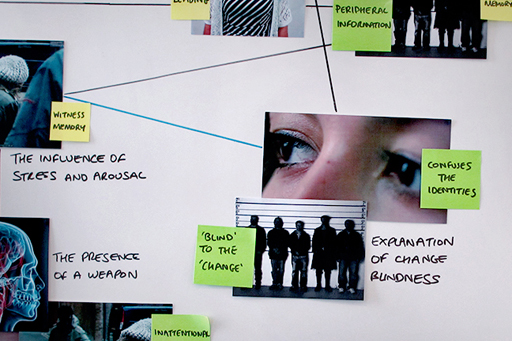2 Explanation of change blindness

Change blindness is the term used to describe a situation in which someone fails to notice that a key element of their surroundings (including the identity of the person right in front of them) has changed.
One of the most important demonstrations of change blindness was a study by Simons and Levin (1998), which started with one researcher initiating a conversation with a participant. After about 15 seconds, two other researchers carrying a door pushed between the first researcher and the participant so that their view of one another was blocked. While the view was blocked, the first researcher swapped places with one of the researchers carrying the door. Once the door had passed, the new researcher then continued the conversation with the participant.
Only seven of the fifteen participants noticed that the person they were having a conversation with had changed, the other eight participants continued the conversation with the other researcher as if nothing had happened. In other words, those eight participants were ‘blind’ to the ‘change’ that had taken place.
The implications of change blindness for an eyewitness viewing a crime are very worrying indeed – it could mean that the witness confuses the identities of those involved.
This problem was demonstrated by Nelson et al. (2011) who showed participants a film in which a female student finishes studying in a student lounge and leaves to buy a drink. While she’s out of the room, another woman (Actor A) enters and takes some money from the student’s table. Two different endings to this scene were filmed. In the first ending, involving ‘no change’, Actor A leaves the room, turns a corner and walks through an exit. In the second ending, involving a ‘change’, when Actor A turns the corner she is replaced by a woman (Actor B) of similar appearance to the first.
Of the 374 participants who viewed the ‘change’ film, only 17 (4.5%) noticed that the identity of the actor changed. Even more worryingly, although 92 of these participants correctly identified Actor A in a line-up, 98 participants selected Actor B. This means that not only can an eyewitness confuse the identity of the perpetrator, they can then go on to identify the innocent person in a line-up.
